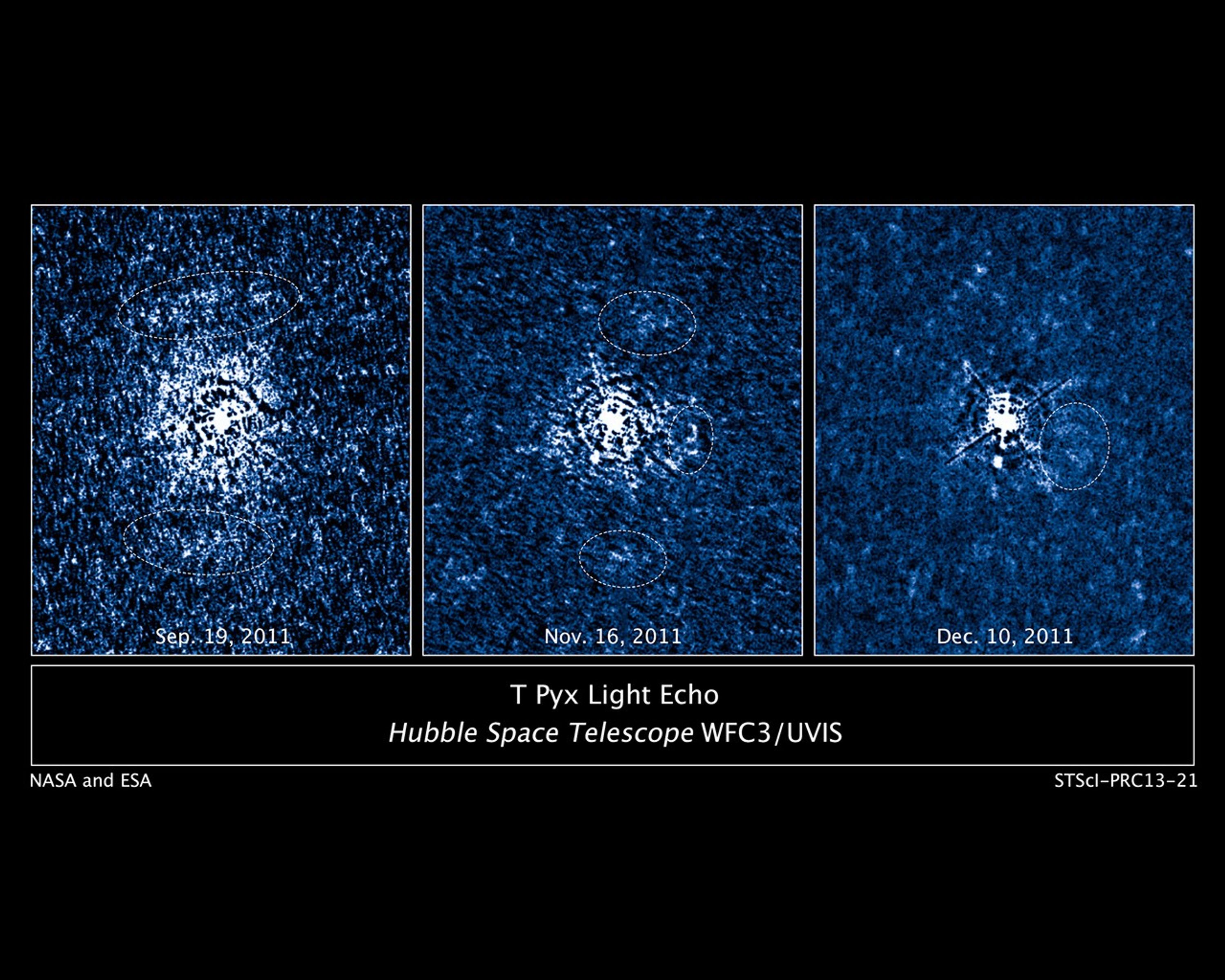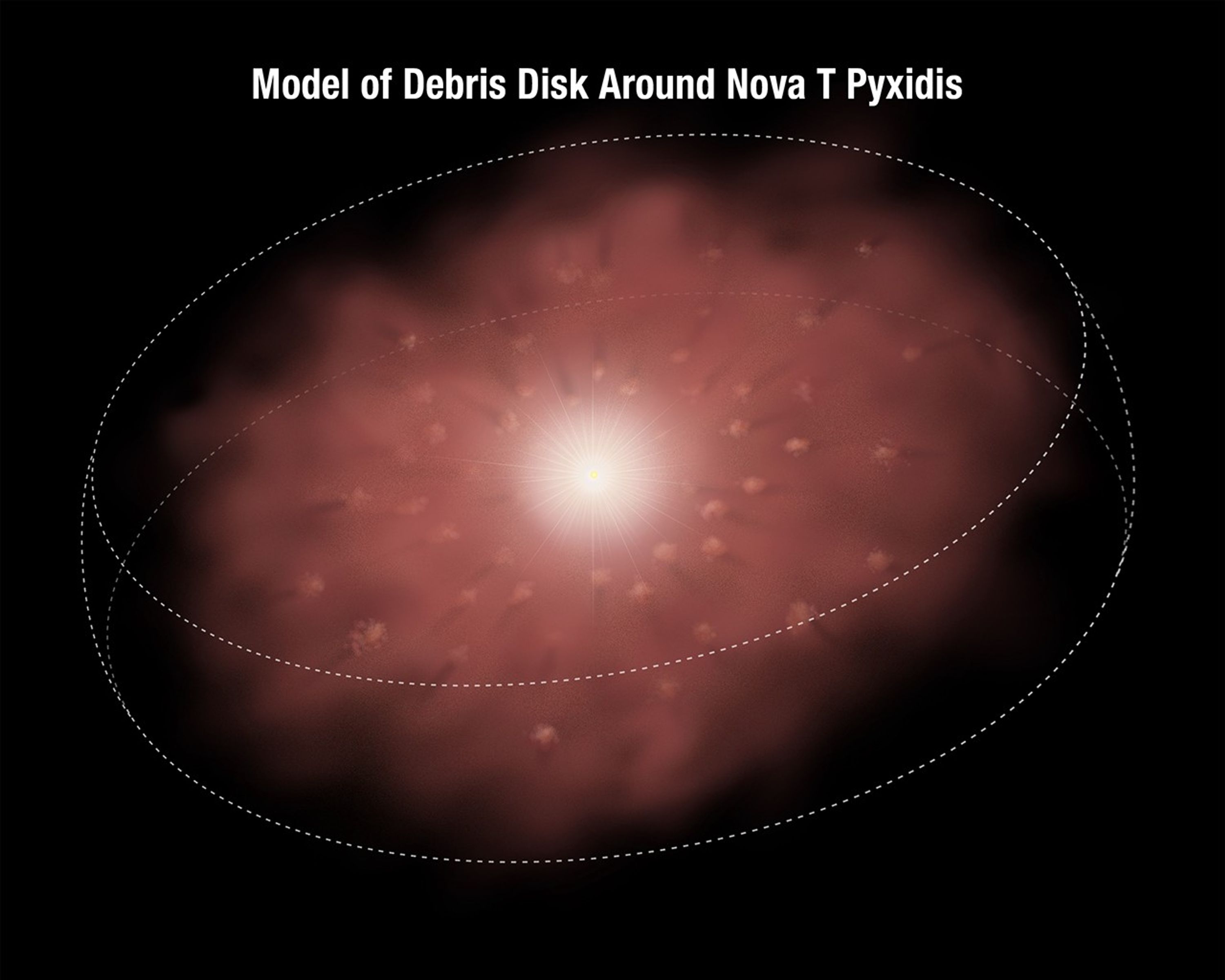1 min read
T Pyxidis Nov. 16, 2011

About the Object
- R.A. PositionR.A. PositionRight ascension – analogous to longitude – is one component of an object's position.09h 4m 41.49s
- Dec. PositionDec. PositionDeclination – analogous to latitude – is one component of an object's position.-32° 22' 47.49"
- ConstellationConstellationOne of 88 recognized regions of the celestial sphere in which the object appears.Pyxis
- DistanceDistanceThe physical distance from Earth to the astronomical object. Distances within our solar system are usually measured in Astronomical Units (AU). Distances between stars are usually measured in light-years. Interstellar distances can also be measured in parsecs.15,600 light-years (4,800 parsecs)
About the Data
- Data DescriptionData DescriptionProposal: A description of the observations, their scientific justification, and the links to the data available in the science archive.
Science Team: The astronomers who planned the observations and analyzed the data. "PI" refers to the Principal Investigator.The image was created from Hubble data from proposal 12448: A. Crotts, J. Sokoloski, and H. Uthas (Columbia University). - InstrumentInstrumentThe science instrument used to produce the data.HST>WFC3 and HST>STIS
- Exposure DatesExposure DatesThe date(s) that the telescope made its observations and the total exposure time.Nov. 16, 2011
- FiltersFiltersThe camera filters that were used in the science observations.WFC3: F225W, F487N, F502N, F547M, F600LP, F656N, F658N, and FQ422M STIS: G430L and G750L
- Object NameObject NameA name or catalog number that astronomers use to identify an astronomical object.T Pyx, T Pyxidis
- Object DescriptionObject DescriptionThe type of astronomical object.Recurrent Nova
- Release DateJune 4, 2013
- Science ReleaseHubble Maps 3-D Structure of Ejected Material Around Erupting Star
- Credit
Related Images & Videos

Flash of Light from Erupting Star Illuminates Debris Disk
These three images taken by NASA's Hubble Space Telescope reveal a disk of previously ejected material around an erupting star being illuminated by a torrent of light unleashed during a stellar outburst. Hubble's Wide Field Camera 3 imaged the double-star system T Pyxidis, or T...

Anatomy of a Debris Disk Around T Pyxidis
This illustration shows a disk of material ejected by an erupting star, called T Pyxidis, or T Pyx. T Pyx is a recurrent nova, erupting every 12 to 50 years and ejecting material that has formed the disk around the bright star. The disk is full of clumps of material that have...
Share
Details
Claire Andreoli
NASA’s Goddard Space Flight Center
Greenbelt, Maryland
claire.andreoli@nasa.gov
































